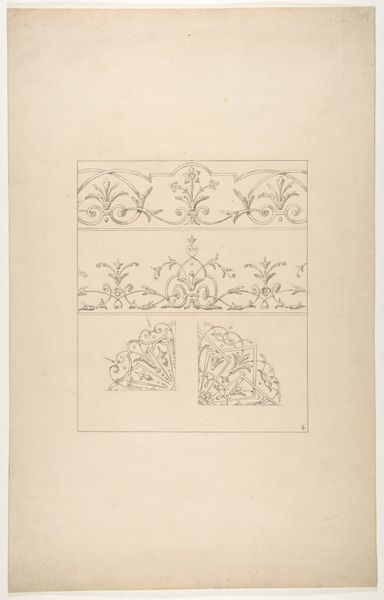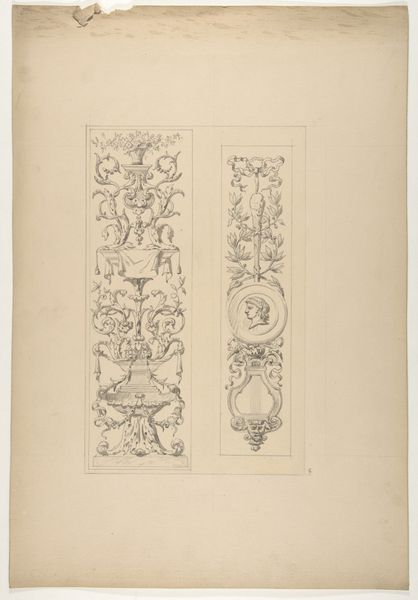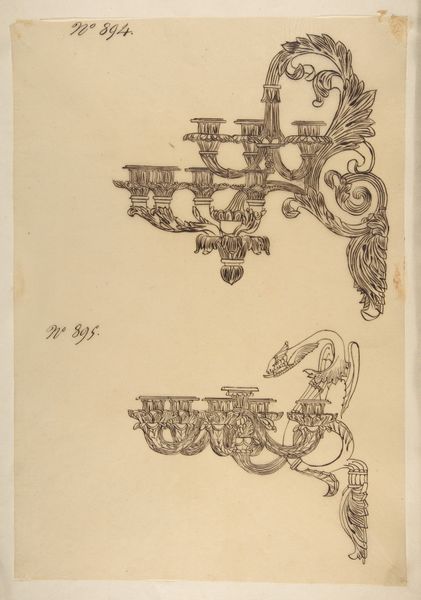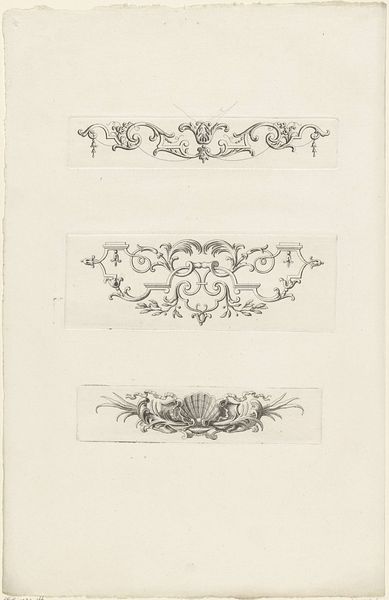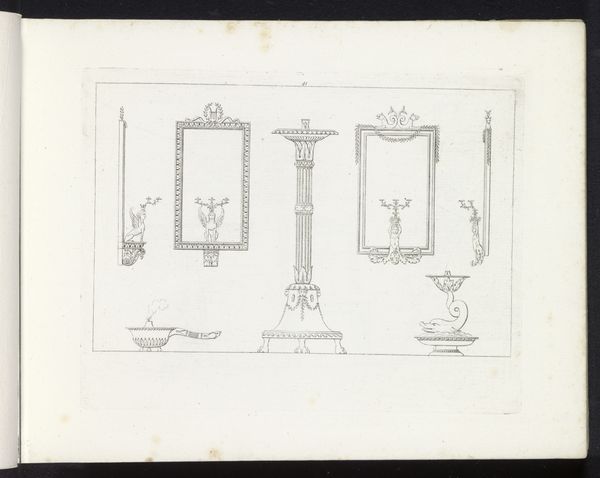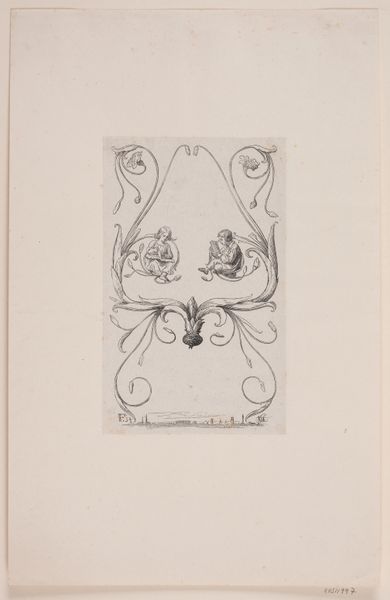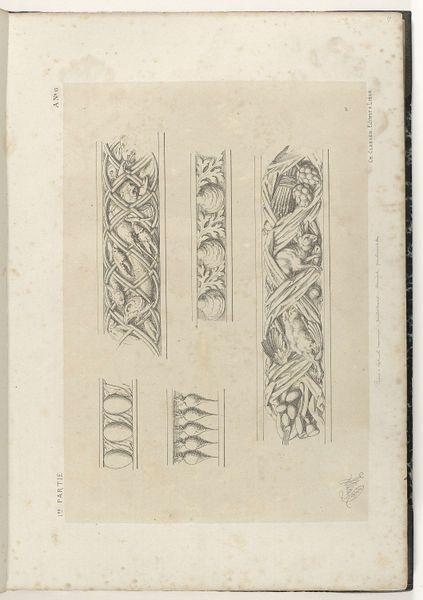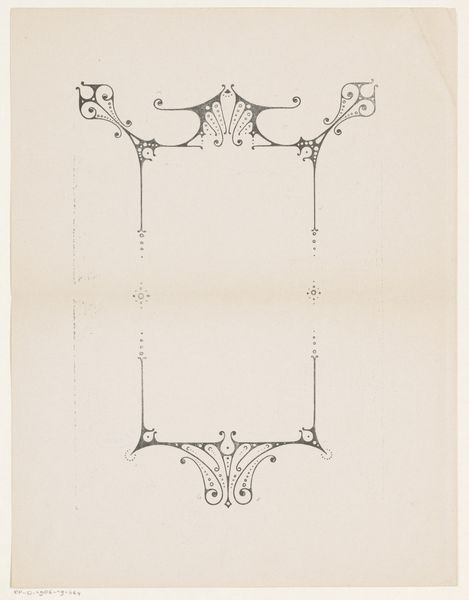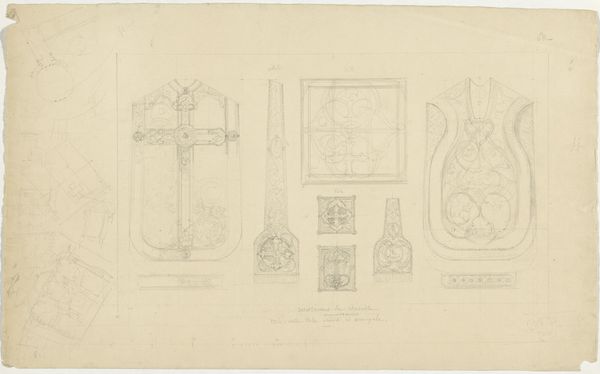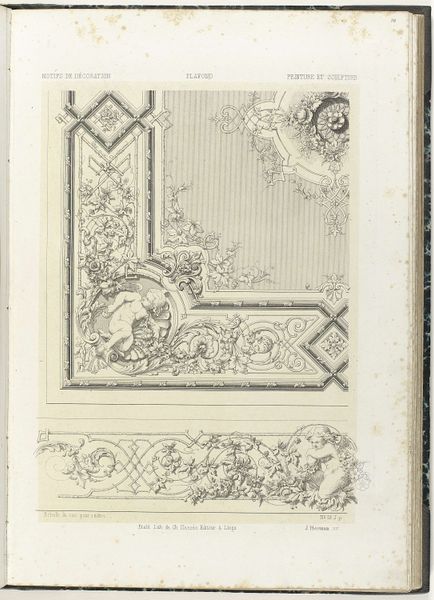
Three designs for decorative borders 1830 - 1897
0:00
0:00
Dimensions: Overall: 19 7/16 x 13 7/16 in. (49.4 x 34.2 cm)
Copyright: Public Domain
Editor: So, this is "Three designs for decorative borders," made sometime between 1830 and 1897 by Jules-Edmond-Charles Lachaise. It’s done with pen, ink, and pencil, right here at the Met. What strikes me most is how delicate these designs feel. What do you see in this piece? Curator: Well, instantly, I'm drawn to the symbols embedded within these borders. These aren't just patterns; they’re echoes of cultural memory. Look at the repeated floral motifs. Where have we seen such ornamentation before, and what did those flowers represent? Is there a continuous thread between the imagery used in ancient Greece and the Arts and Crafts movement? Editor: That’s interesting, I was just thinking about how similar it looked to art nouveau. Curator: Precisely! Art Nouveau itself is a conscious revival, isn’t it? Artists looked to nature and idealized it. It carries within it, psychological aspirations towards harmony and beauty but also societal memory from times when nature was more respected, perhaps. Don't you feel that connection, a sort of reaching back? Editor: I can see that now. Like a visual reminder of past artistic eras. Curator: And that geometric design on top – what cultures throughout history used similar patterns, and for what purpose? Think of it as a continuous visual language. Editor: Wow, it’s like the designs contain layers and layers of meaning, passed down through the ages. Curator: Exactly! And each generation reinterprets those symbols. This seemingly simple piece speaks volumes about humanity’s relationship with design and symbolism. Editor: I'll never look at decorative borders the same way again! Curator: Nor I. It really highlights how art carries memory within itself, doesn't it?
Comments
No comments
Be the first to comment and join the conversation on the ultimate creative platform.
